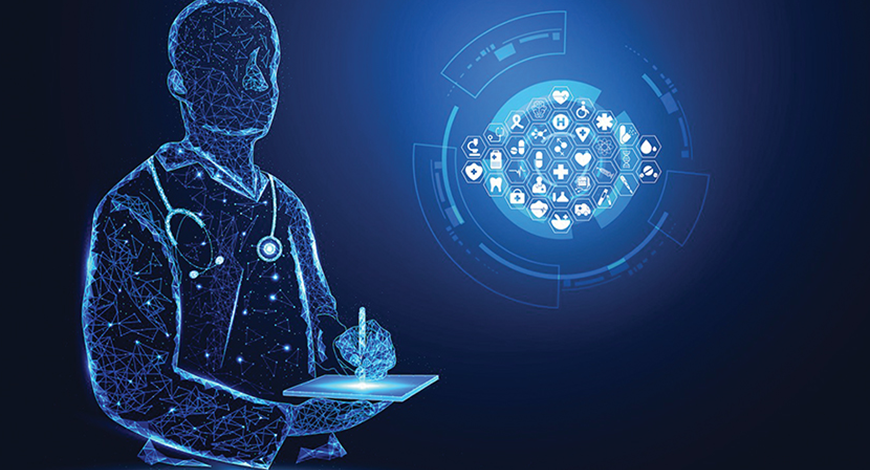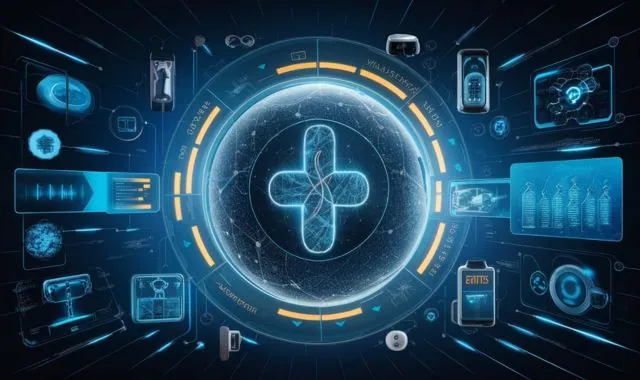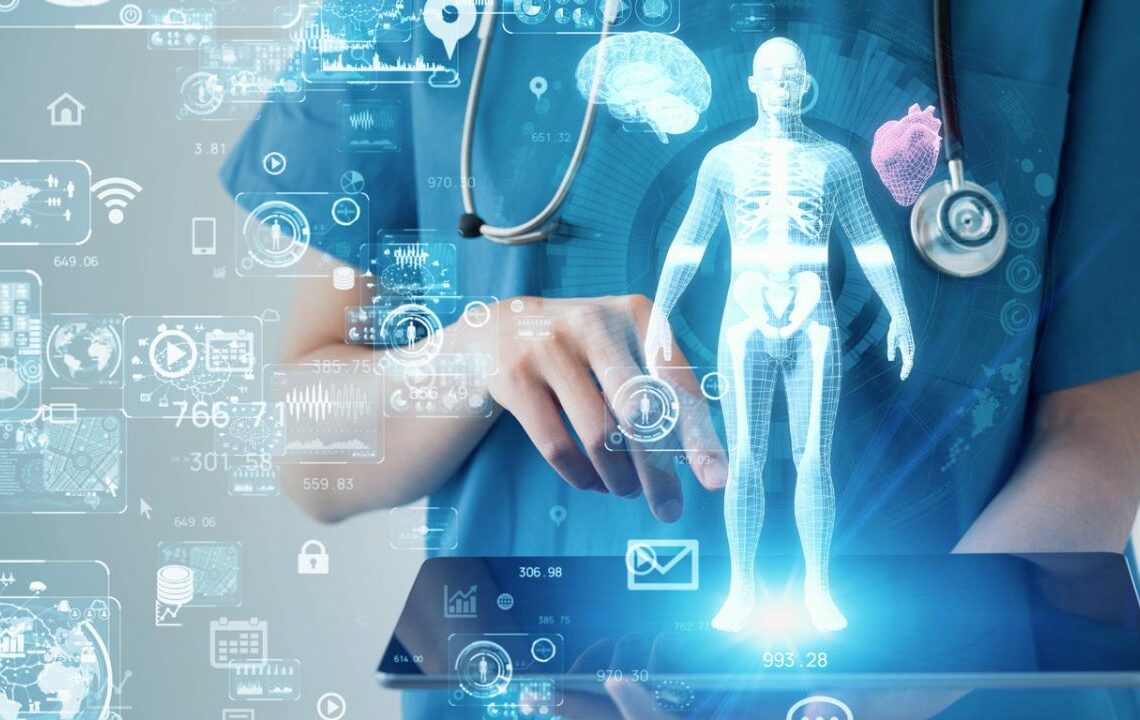For centuries, the practice of medicine has been built on a foundation of generalization. Treatments, drug dosages, and wellness advice were designed for the “average person”—a statistical construct that, in reality, fits no one perfectly. This one-size-fits-all approach has saved countless lives, but its limitations are profound, often resulting in trial-and-error treatments and reactive rather than proactive care. Today, we stand at the precipice of a monumental shift, a transformation powered by technology that places you, the individual, at the absolute center of your healthcare journey.
The era of personalized medicine is no longer a distant dream; it is an unfolding reality. Health technology, or HealthTech, is the powerful engine driving this revolution. It is a dynamic fusion of data science, artificial intelligence, advanced engineering, and genomics, all converging to create a new healthcare paradigm. This paradigm is predictive, participatory, and profoundly personalized. It moves away from treating sickness and toward cultivating wellness, tailored to your unique biology, lifestyle, and environment.
This in-depth article explores the key pillars of the HealthTech revolution that are making personalized care a reality. We will journey through the world of digital diagnostics powered by AI, uncover how 24/7 wearable guardians are transforming personal data into actionable insights, see how telehealth is breaking down geographical barriers, and delve into the astonishing potential of medicine tailored directly to your DNA. This is the story of how technology is empowering a future where your healthcare is as unique as you are.
The Core Technologies Forging Personalized Medicine

The incredible pace of innovation in HealthTech is driven by several interconnected technologies. Each one provides a critical piece of the puzzle, and together, they are building a holistic, high-definition picture of individual human health that was unimaginable just a decade ago.
A. Artificial Intelligence (AI) and Machine Learning: The Digital Super-Diagnostician Artificial Intelligence is arguably the most powerful catalyst in the personalization of medicine. Its ability to analyze colossal datasets and identify subtle patterns far beyond human capability is revolutionizing diagnostics, treatment planning, and drug discovery.
Radiology and Medical Imaging: AI algorithms, particularly deep learning models, are now being trained on millions of medical images (X-rays, CT scans, MRIs). The results are astounding. These systems can detect signs of cancer, diabetic retinopathy, or neurological disorders with an accuracy that often meets or even exceeds that of a human radiologist. This doesn’t replace the expert but acts as an infallible second opinion, catching minute details that might otherwise be missed and allowing specialists to focus their attention where it’s needed most. This personalizes care by ensuring earlier, more accurate diagnoses.
Predictive Analytics: By analyzing a patient’s Electronic Health Record (EHR), genetic information, and even data from their wearable devices, machine learning models can predict their risk of developing chronic diseases like heart failure or diabetes years in advance. This allows clinicians to move from a reactive to a proactive stance, creating highly personalized intervention plans—customized diets, exercise regimens, and monitoring schedules—to prevent the disease from ever manifesting.
Personalized Treatment Plans: For complex diseases like cancer, AI is transforming treatment. The “one-drug-fits-all” chemotherapy approach is being replaced by AI-driven analysis. By examining the specific genetic mutations of a patient’s tumor, along with a vast database of treatment outcomes, AI can recommend the most effective combination of targeted therapies, minimizing side effects and maximizing the chances of remission. It’s the digital embodiment of a personalized oncology consultant.
B. Wearable Devices and Biosensors: Your 24/7 Health Guardian The power of data in healthcare is directly proportional to its frequency and context. A single blood pressure reading taken once a year at a doctor’s office offers a tiny, often misleading, snapshot of a person’s health. Wearable technology has shattered this limitation, transforming every individual into a continuous source of valuable health data.
What began as simple step counters has evolved into a suite of sophisticated medical-grade sensors worn on the wrist, as a patch, or integrated into clothing. Modern smartwatches and fitness trackers can continuously monitor:
- Heart Health: Tracking heart rate, heart rate variability (HRV), and even performing on-demand electrocardiograms (ECGs) to detect irregularities like atrial fibrillation (AFib).
- Respiratory Function: Monitoring blood oxygen saturation (SpO2) and respiratory rate, which can be early indicators of respiratory or cardiovascular issues.
- Sleep Quality: Analyzing sleep stages (light, deep, REM) to provide personalized advice for improving sleep hygiene, which is critical for overall health.
- Stress Levels: Using metrics like HRV to quantify physiological stress, prompting users to engage in mindfulness or breathing exercises.
- Body Temperature and More: Continuous temperature monitoring can signal the onset of an infection before other symptoms appear.
This relentless stream of data is the lifeblood of personalization. It provides a real-world, dynamic view of how an individual’s body responds to diet, exercise, stress, and medication. This empowers both the user and their doctor to co-create personalized wellness plans, make proactive adjustments, and catch potential health issues before they become critical.
C. Telehealth and Remote Patient Monitoring (RPM): Healthcare, Anywhere The COVID-19 pandemic acted as a massive accelerator for telehealth, shifting virtual consultations from a niche service to a mainstream pillar of healthcare delivery. This shift has persisted because it offers a level of convenience and access that is inherently personal. Patients in rural areas can consult with top specialists in major cities without the cost and burden of travel. Busy professionals can have a follow-up appointment from their office.
However, the true power of telehealth in personalization is unlocked when combined with Remote Patient Monitoring (RPM). RPM uses connected devices—such as Bluetooth-enabled blood pressure cuffs, glucometers, and smart scales—to transmit a patient’s vital signs directly from their home to their healthcare provider in real time.
This is a game-changer for managing chronic conditions:
- A diabetes patient’s blood glucose readings can be monitored daily by their care team, who can then provide immediate, personalized feedback on insulin dosage or diet.
- A post-operative patient can be monitored from home, reducing hospital stays and the risk of infection, while still giving their surgeon the data needed to ensure a smooth recovery.
- An elderly patient with congestive heart failure can have their weight and blood pressure tracked automatically, allowing doctors to intervene at the first sign of fluid retention and prevent a costly and dangerous hospital admission.
RPM personalizes care by making it continuous, contextual, and collaborative, strengthening the patient-provider relationship beyond the four walls of the clinic.
D. The Genomic Revolution: Medicine Tailored to Your DNA If AI is the brain of personalized medicine, genomics is its soul. Our genome is the unique biological blueprint that dictates everything from our hair color to our predisposition for certain diseases. Precision medicine, powered by advances in genetic sequencing, aims to read this blueprint and use it to design healthcare interventions tailored to the individual’s unique genetic makeup.
The cost of sequencing a human genome has plummeted from billions of dollars to just a few hundred, making this powerful technology increasingly accessible. Its applications are profound:
- Pharmacogenomics: This field studies how a person’s genes affect their response to drugs. Have you ever wondered why an antidepressant works perfectly for one person and has no effect on another? The answer is often in their genes. Through a simple genetic test, doctors can now predict which medications will be most effective and which are likely to cause adverse side effects for a specific patient, eliminating the dangerous and frustrating trial-and-error process.
- Targeted Cancer Therapy: Cancer is a disease of the genes. Genomic testing of tumors can identify the specific mutations driving their growth. This allows oncologists to prescribe “smart drugs” that target those exact mutations, often with far greater success and fewer side effects than traditional chemotherapy.
- Genetic Risk Scores: By analyzing thousands of genetic variants, scientists can calculate a Polygenic Risk Score (PRS) that estimates an individual’s inherited risk for conditions like coronary artery disease, breast cancer, or Alzheimer’s. This is the ultimate form of personalized prevention, allowing individuals with high genetic risk to adopt aggressive lifestyle changes and screening protocols long before any symptoms emerge.
E. Unified Health Records and Interoperability: Weaving the Complete Picture All the incredible data generated by AI, wearables, and genomic tests is only useful if it can be brought together into a single, cohesive view of the patient. This is the role of the modern Electronic Health Record (EHR). For too long, patient data has been trapped in “silos”—a primary care doctor’s records are separate from a hospital’s system, which is separate from a specialist’s notes.
The push for interoperability—the ability of different IT systems to securely exchange and interpret health information—is the critical final step in personalization. When a patient’s complete history, including their genetic data, wearable-derived lifestyle data, and clinical notes, is available to their entire care team, true personalization can occur. An AI algorithm can then analyze this complete, unified record to provide insights that would be impossible to glean from any single source. It ensures that every decision made by a provider is informed by the most complete and up-to-date picture of the patient’s unique health journey.
Overcoming Hurdles on the Path to Personalization

While the future of personalized HealthTech is bright, the path forward is not without significant challenges that must be addressed responsibly.
- Data Privacy and Security: The immense volume of sensitive personal health information being generated is a prime target for cyberattacks. Robust encryption, secure data storage, and transparent privacy policies are non-negotiable. Patients must have absolute control over who can access their data and for what purpose.
- The Digital Divide: The benefits of HealthTech must be accessible to everyone, not just the wealthy and tech-savvy. Ensuring that elderly populations, low-income communities, and those with limited digital literacy can access and use these tools is a crucial ethical and social challenge.
- Regulation and Validation: How do regulatory bodies like the FDA approve an AI algorithm that is constantly learning and evolving? New frameworks are needed to ensure these technologies are safe, effective, and free from bias without stifling innovation.
- Cost and Integration: Implementing these advanced systems can be expensive for healthcare providers. Integrating them seamlessly into existing clinical workflows requires significant investment in infrastructure and training.
A New Covenant for Health
The health technology revolution is fundamentally rewriting the covenant between patients and providers. It is shifting the focus from episodic treatment of disease to the continuous cultivation of individual wellness. The one-size-fits-all model is being replaced by a healthcare system that is intelligent, responsive, and as unique as your own fingerprint.
Through the predictive power of AI, the constant vigilance of wearable guardians, the boundless access of telehealth, and the profound insights of genomics, we are being empowered with unprecedented agency over our own health. While serious challenges of privacy, equity, and regulation must be navigated with care, the trajectory is clear and irreversible. We are at the dawn of a new era where technology will not only cure us but will know us, creating a future where healthcare is truly, finally, personal.








